Honor Magic6 Pro review

Versatile triple camera on the back, 180MP telephoto
The Honor Magic6 Pro's camera system is a reimagining of the previous generation's setup, with a main camera that trades in sensor size for a brighter dual aperture lens, and a shorter telephoto with a super high-res sensor that can also zoom in beyond its nominal focal length.

- Wide (main): 50MP 1/1.3", Omnivision OV50H, 1.2µm (2.4µm), f/1.4-f/2.0, 27mm (23mm native), Laser AF, PDAF, OIS; 2160p@60fps
- Telephoto: 180MP 1/1.49" (200MP Samsung Isocell S5KHP3, 1/1.40"), 0.56µm (2.24µm), f/2.6, 68mm (62mm native), PDAF, OIS; 2160p@60fps
- Ultrawide: 50MP 1/2.88", Omnivision OV50D, 0.612µm (1.224µm), f/2.0, 13mm (122˚), PDAF; 2160p@60fps
- Front camera: 50MP 1/2.93", Sony IMX 816 (or LYT500?), 0.6µm (1.2µm), f/2.0, 22mm, PDAF; 2160p@30fps
The new main camera uses a 1/1.3" sensor in place of the old model's 1/1.12" unit but makes up for that with a lens that's brighter than the old one (f/1.4 vs. 1/1.6) and can also stop down to f/2.0 maximizing depth of field for close up shots. Honor calls this sensor H9000, which appears to be a customized version of the OmniVision OV50H, which is also used in the IQOO 12 and the Xiaomi 14.
The new telephoto unit is specced at 2.5x zoom, down from the 3.5x of the Magic5 Pro, and the Honor specs list a 180MP nominal resolution that should easily allow for high-quality 5x capture. In fact, that is the 200MP Samsung HP3 sensor that Honor appears to be using unusually.
The ultrawide camera's sensor is new this time around, albeit still at 50MP in nominal resolution.
For selfies, there's what appears to be a Sony 50MP Quad Bayer sensor, coupled with a wide-angle autofocusing lens.

Mind you, the Magic6 Pro, like most recent Honor smartphones, isn't at all forthcoming when it comes to reporting its imaging hardware, and neither are Honor's official specs or press materials - the data listed here has been scraped off various third-party sources and while it makes sense, it may or may not be entirely accurate.
Also worth noting is that the field of view on the Magic6 Pro's cameras is different between the binned modes and the full-res modes, and the focal length numbers reported in the EXIF data and those officially listed can be different - that's not news, strictly speaking, but it can be confusing if you encounter it for the first time.
Daylight photo quality
Main camera
The Magic6 Pro captures nice-looking daylight photos with its main camera, similar to those from the previous model, but with some differences too. Sharpness and detail levels are very good, and the fine grain in areas of uniform color isn't too disturbing, though the Magic5 Pro's shots were cleaner. Dynamic range is great, the auto white balance is dependable, and color saturation is very well judged in the default Vivid mode.









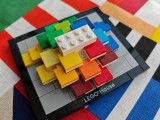




Daylight samples, main camera (1x)
We wouldn't say there's a readily observable difference in sharpness between shots taken at f/1.4 or stopped down to f/2.0. The ability to control the aperture on the main camera between these two settings is only really beneficial in terms of depth of field control when shooting relatively close subjects. You can do that in Pro mode, while in the regular Photo mode the phone will pick the aperture based on lighting and subject proximity.
You have to keep in mind that at or around the minimum focus distance (which is quite small at roughly 10cm), the depth of field at f/1.4 is very shallow and even minuscule hand movements after focusing may result in a misfocused subject.




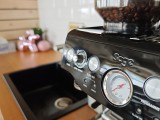





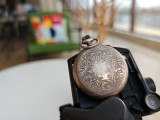
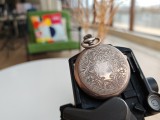
Daylight samples, main camera (1x): f/1.4 • f/2.0
There are also a couple more shooting profiles that alter some image parameters. 'Natural' doesn't appear to do a whole lot, but 'Authentic' dials up the contrast and saturation and adds a liberal amount of vignetting.


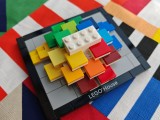

Daylight samples, main camera (1x), Natural


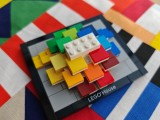

Daylight samples, main camera (1x), Authentic
You can also check out a few shots of our resident people shots model, in both Photo mode and Portrait mode.




Daylight samples, main camera (1x), Photo mode
You get two focal lengths. Portrait mode also has a shortcut to 2x zoom, which you don't get in Photo mode.




Daylight samples, main camera (1x), Portrait mode




Daylight samples, main camera (2x), Portrait mode
Telephoto camera
Which brings us to the Magic6 Pro's headlining camera, the 2.5x zoom telephoto. It takes great images with excellent detail and no noise to speak of. The dynamic range is nicely wide, and the contrast is just right, too. The red sign in the first image is very off - that bit is clear, but it's a one-off blunder that doesn't ruin the impression of an overall faithful and likeable color performance.















Daylight samples, telephoto camera (2.5x)




Daylight samples, telephoto camera (2.5x), Portrait mode
The huge 180MP isn't just for 2.5x zoom though - it captures high-quality 5x stills too. The main weak point in these images is the artificially processed look of very fine random detail - look at the trees in the sixth and seventh samples. It's something you can spot to some extent in all the Honor's photos, but here, it's taken to a more readily noticeable level. Other than that, the 5x zoom shots are solid.











Daylight samples, telephoto camera (5x)




Daylight samples, telephoto camera (5x), Portrait mode
One of the telephoto camera's main virtues is its ability to focus close, allowing for some nice, highly-detailed shots of tiny objects. The shallow depth of field allows you to successfully separate the subject from the background and channel the viewer's attention. You can do it at both 2.5x and 5x, of course.


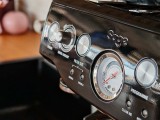

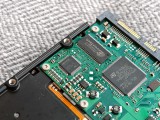


Closeup samples, telephoto camera (2.5x)



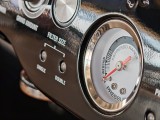

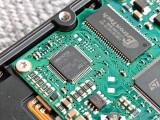
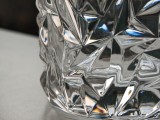
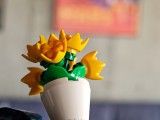
Closeup samples, telephoto camera (5x)
Ultrawide camera
The Magic6 Pro's ultrawide camera is also a capable performer during the day. It's wider than most ultrawides, which is already a great premise for its usefulness, and it manages to capture sharp and detailed images with minimal softening towards the very corners. Dynamic range and color reproduction are hard to fault as well.











Daylight samples, ultrawide camera (0.6x)
Selfies
The selfie camera of the Magic6 Pro takes pretty good selfies in broad daylight, with a minor drop in quality in dimmer indoor conditions. Detail is great while noise is nonexistent, and the lifelike skin tones and overall vibrant colors mean there's little to complain about here.
Low-light photo quality
In the dark, the Magic6 Pro will capture essentially the same photos in Night mode that it will in Photo mode with whatever auto Night mode action it decides is appropriate. Indeed, there's a lot to like about the phone's low-light photos that you get with little effort.
Main camera
The main camera's photos have excellent dynamic range with well-preserved highlights and good shadow development. The auto-white balance handles complex conditions well, and colors maintain a nice level of accuracy and saturation. Things are looking good on a pixel level too, where even though you can tell there's some heavy low-light processing, a lot of detail is still being retained.









Low-light samples, main camera (1x)
Telephoto camera
The telephoto camera's 2.5x results in the dark are superb. Detail is excellent, and it's drawn in a relatively natural way - a bit more so than on the main camera. Colors are on point, once again.
The metering and exposure behavior is a bit specific in its ways, and particularly contrasty scenes tend to end up underexposed as the phone tries to salvage as much highlight detail as possible. That second to last image isn't the best-looking rendition of that scene, we'll be quick to admit, but it's more of an outlier in an otherwise great showing.











Low-light samples, telephoto camera (2.5x)
The 5x zoom results aren't as great on a pixel level, and a dedicated 5x module like that of the Galaxy S24 Ultra would deliver notably sharper and better-detailed shots. That said, the Honor's 5x photos still maintain a decent level of detail in difficult scenes, while better lit subject are more into good to very good territory - we wouldn't hesitate to use the 5x button.








Low-light samples, telephoto camera (5x)
Utlrawide camera
The ultrawide camera is rather sketchy in its detail presentation at night, and its shadows are on the soft side - it's not bad, but it's not particularly great either if you're into pixel peeping. We are liking its exposures and dynamic range, though, and when you couple those with the good color output, the ultrawide images look nice from afar.






Low-light samples, ultrawide camera (0.6x)
Video recording
The Honor Magic6 Pro can record video up to 4K60 with its three rear cameras, while the front-facing one can do 4K30 or 1080p60. The default codec is h.264, but you do get the option to use h.265. There is always-on electronic stabilization available across all four cameras.
Video quality out of the Honor is somewhat lacking. There's an overall softness to the main camera footage and it's also exposed a little too dark. Colors are nicely vibrant though, so there's that, and 4K60 comes at no quality penalty over 4K30, which is also nice.
The ultrawide does better with exposure, but its color rendition is off (when it comes to video). 4K is decently sharp and detailed for an ultrawide, but 4K60 comes with some extra softness.
The telephoto footage is generally the most appealing of the three. Detail is very good (same in 4K30 and 4K60), and global parameters like dynamic range and colors are on point.
Stabilization is great across the board. The main camera and the ultrawide iron out walking shake proficiently, and all three cameras pan smoothly without abrupt transitions. The telephoto has tiny hints of left over tremors, but generally you can expect very stable footage from the three cameras if you just point them in one direction.
In low light, the main camera does an admirable job with exposure, dynamic range and colors, and detail is decent if you don't stare at the pixels deliberately. There's a Super Night mode for video, which locks the frame rate at 24fps, but it didn't appear to make a significant difference in our testing.
The ultrawide struggles in the dark and shows limited dynamic range, overall softness, and a dislike for certain types of lights that flicker quite annoyingly.
The telephoto can't expose correctly for our type of night scene, and its footage is way too dark, if still quite sharp underneath.
Video sample playlist
Reader comments
- Brialex
- 07 Apr 2025
- n2x
Totally agree with you on this one! Dxo Mark`s review over the Honor Magic 6 Pro wasn`t true at all and it lacked a lot of malfunctions and problems the phone has. I was one of the people fooled by their reviews. Can`t exactly tell about how they tes...
- Luka3rd
- 03 Feb 2025
- JFk
Are you deaf? You never EVER criticise sound quality enough! Samsung has by far the worst speakers of all expensive phones, and this Honor is sublime... I was listening to it today at the shop - it's closest to iPhone we'll ever get, ap...



